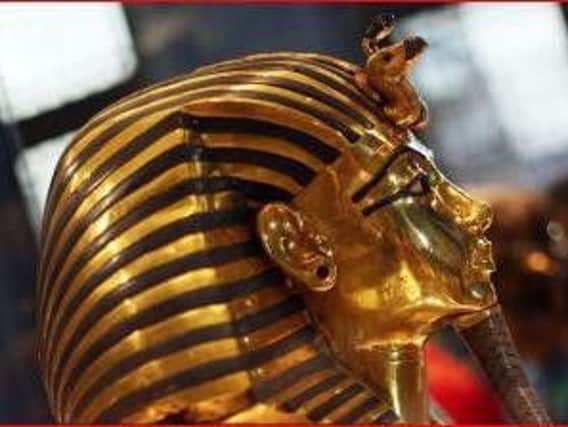Tutankhamun was a warrior king not a feeble boy, Northampton academics claim


Specialised photography has shown definite signs of wear on the 3,000-year-old original - raising questions over the image of King Tut as feeble.
Lucy Skinner, the University’s expert on ancient Egyptian leather who featured in the show, said: “It was possible to see abrasion along the edges of the leather scales, meaning that the armour had seen considerable use. That suggests that Tutankhamun had worn it, and that perhaps he had even seen battle.”
Advertisement
Hide AdAdvertisement
Hide Ad“If this is true, it would be an amazing revelation, countering the idea that Tut was a weak and sickly boy-king.”
Starting at 9pm, Saturday’s hour-long Channel Five show explores how the armour was made, and whether being buried within the famous pharaoh’s tomb meant Tutankhamun had worn it into battle.
It was during the filming of ‘Tutankhamun’s Treasures’ that the use of Reflectance Transformation Imaging – a relatively new technique which merges several images of an object photographed under different lighting angles - revealed to Lucy these never before seen features on the armour.
The archaeologist and museum conservator first laid eyes on the 3,000-year-old object – which once consisted of a tunic-like garment – in 2016.
Advertisement
Hide AdAdvertisement
Hide AdShe was contacted by the programme makers when they learnt that she was one of only a handful of people outside of Egypt to have examined the fragile remnants of the garment - or cuirass - which are housed in the new Grand Egyptian Museum, Cairo.
During the programme, she can be seen carefully examining it in Cairo, as well as attempting to recreate the ancient leather at the University’s tanneries in Northampton, which are housed within its Institute of Creative Leather Technologies.
Her research involves studying ancient Egyptian and Nubian leather objects to understand how they were made, used, and what they would have looked like.
Despite being excavated almost a century ago, it is still a mystery how the overlapping leather scales used in the armour were made, or whether it even had a military use.
Advertisement
Hide AdAdvertisement
Hide Ad“I have been working on some experimental tanning to create replicas of the individual scales. The ancient methods used for making this type of leather are not really well understood. Materials will invariably change chemically and physically after being buried for thousands of years, so there are a lot of complicated scientific processes involved in finding these things out,” said Lucy.
Leather rarely survives at archaeological sites because it is really vulnerable to damage caused by moisture, she added.
Discovered during Howard Carter’s famous 1920s excavation, the cuirass suffered greatly - probably while it was being removed from the original box in which it was placed in the tomb, and when the excavators attempted to unfold it.
Today, only a small portion of it survives and Lucy hopes to help find funding to allow the conservators at the Cairo museum to dedicate some time to restoring the unique object.
Advertisement
Hide AdAdvertisement
Hide Ad“It would be great if my experimental work in Northampton helped my Egyptian colleagues to make an accurate reconstruction for display alongside the fragments of the original,” Lucy said.
Lucy has also just finished authoring a chapter in a book about leather chariot covers from Ancient Egypt that will be published by Sidestone Press in March, and also plans a visit to Sudan in April to examine leather objects in the National Museum, Khartoum
Whilst there she plans to visit some traditional leather tanneries to observe tanning techniques, and to collect local materials used in leather tanning, to use as reference material.
The documentary ‘Tutankhamun’s Treasures’ can be seen Saturday 24 March at 9pm on Channel Five.